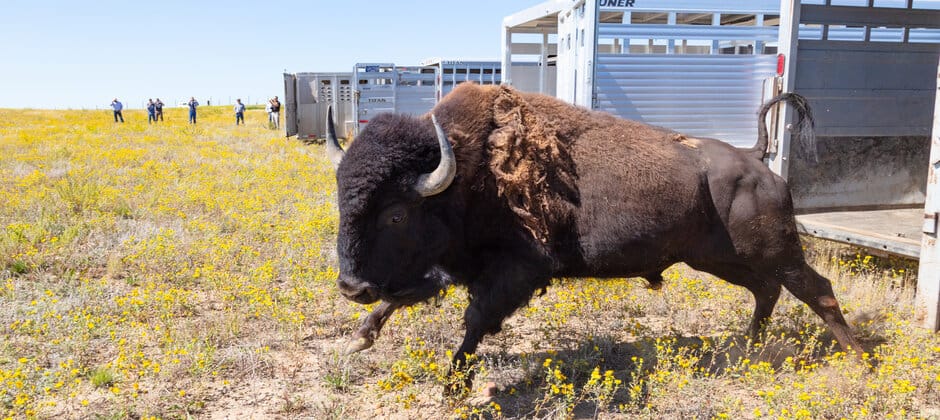Share this article
Yellowstone aims to cull 900 bison this year
Yellowstone National Park has begun its annual winter removal of bison from the park’s herd in an effort to help sustain the population and reduce spread of disease to livestock, damage to private property and threats to human safety.
Yellowstone’s bison herd has grown steadily over the last 50 years, from 50 individuals in 1970 to more than 5,000 individuals today, according to park biologists. While the rebound of the American bison (Bison bison) is a conservation success story, bison that wander beyond park boundaries during migration can spread the bacterial disease brucellosis to domestic livestock and cause human-wildlife conflict.
To minimize these risks, Yellowstone National Park actively manages the herd by removing a predetermined number of bison every winter under the Interagency Bison Management Plan, a collaborative effort between U.S. federal agencies and tribal nations to guide bison management in the park. The plan defines a population of 3,000 bison as ideal for the park, and places an emphasis on using alternative management methods to slaughter when possible.
Each year, the park culls the herd through three main techniques: slaughter facilitated by wildlife officials, relocation, and state and tribal hunts. This year, the National Park Service aims to cull 900 of the 5,000 bison in the park. Last year, the removal goal was 500-700 bison, although the park only captured 187 individuals.
So far this year, the park has captured 34 total bison, most of which have been dispatched by wildlife managers. Twenty-seven of those bison were slaughtered, and their meat was given to the Confederated Salish and Kootenai Tribes. The remaining 10 captured bison are currently under quarantine and will be transferred to habitats on tribal lands to both supplement existing populations and establish new populations.
Park officials have indicated that going forward, relocation of the animals under the Bison Conservation Transfer Program will be prioritized over lethal methods.
Header Image: A captured American bison being released at Ft. Peck Indian Reservation. Credit: Jacob W. Franke/Yellowstone National Park








